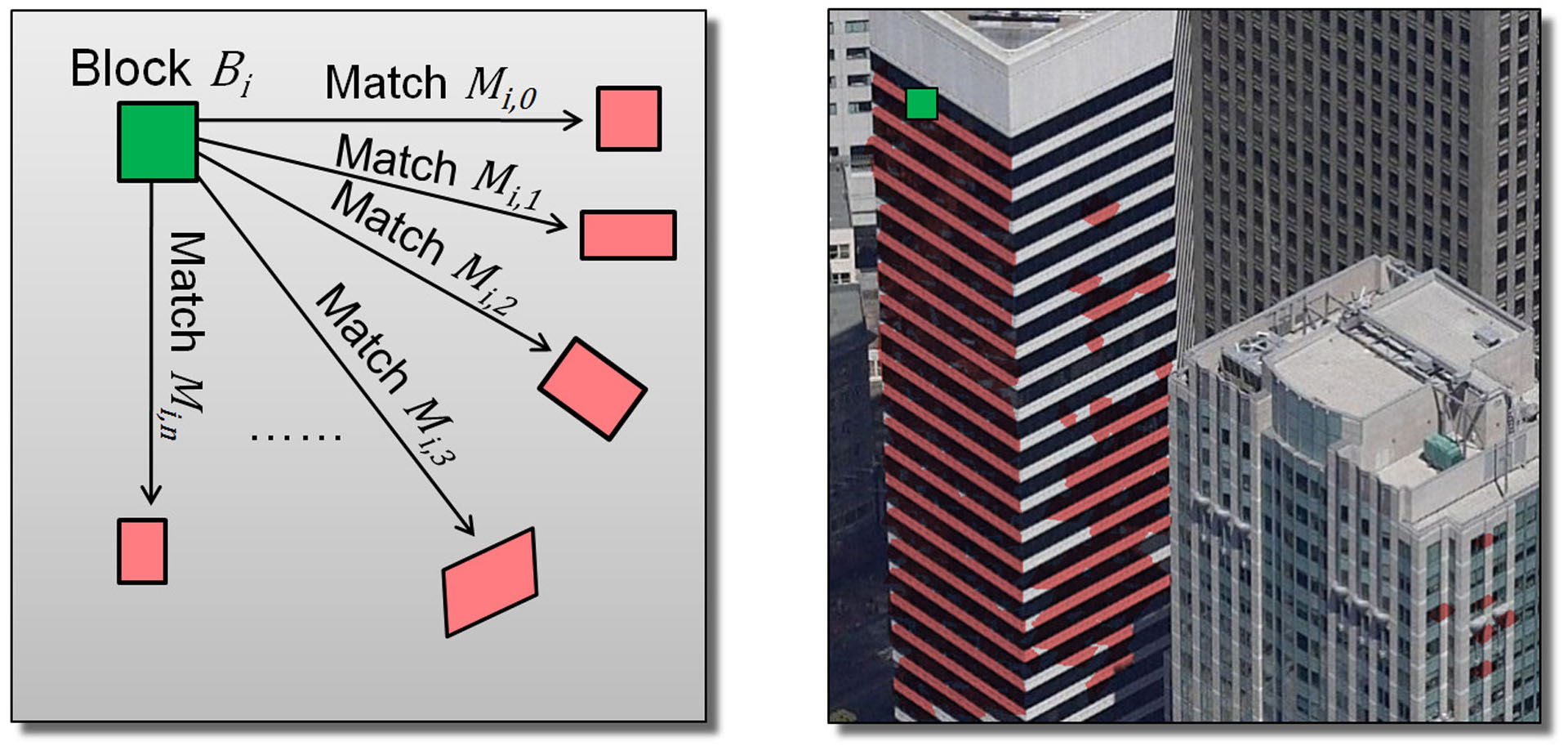“Factoring repeated content within and among images” by Wang, Wexler, Ofek and Hoppe
Conference:
Type(s):
Title:
- Factoring repeated content within and among images
Presenter(s)/Author(s):
Abstract:
We reduce transmission bandwidth and memory space for images by factoring their repeated content. A transform map and a condensed epitome are created such that all image blocks can be reconstructed from transformed epitome patches. The transforms may include affine deformation and color scaling to account for perspective and tonal variations across the image. The factored representation allows efficient random-access through a simple indirection, and can therefore be used for real-time texture mapping without expansion in memory. Our scheme is orthogonal to traditional image compression, in the sense that the epitome is amenable to further compression such as DXT. Moreover it allows a new mode of progressivity, whereby generic features appear before unique detail. Factoring is also effective across a collection of images, particularly in the context of image-based rendering. Eliminating redundant content lets us include textures that are several times as large in the same memory space.
References:
1. Ahuja N., and Todorovic S. 2007. Extracting texels in 2.1D natural textures. ICCV.Google Scholar
2. Beers A., Agrawala M., and Chaddha N. 1996. Rendering from compressed textures. ACM SIGGRAPH. Google ScholarDigital Library
3. Brooks S., and Dodgson N. 2002. Self-similarity based texture editing. ACM SIGGRAPH. Google ScholarDigital Library
4. Brown M., and Lowe D. 2003. Recognizing panoramas. ICCV. Google ScholarDigital Library
5. Buehler C., Bosse M., Mcmillan L., Gortler S., and Cohen M. 2001. Unstructured lumigraph rendering. SIGGRAPH. Google ScholarDigital Library
6. Chen S. 1995. QuickTime VR: An image-based approach to virtual environment navigation. ACM SIGGRAPH. Google ScholarDigital Library
7. Dabov K., Foi A., Katkovnik V., and Egiazarian K. 2007. Image denoising by sparse 3D transform-domain collaborative filtering. IEEE Transactions on Image Processing, 16, 8. Google ScholarCross Ref
8. Fisher Y. 1995. Fractal Image Compression, Theory and Application. Springer-Verlag, New York. Google ScholarDigital Library
9. Freivalds K., Dogrusoz U., and Kikusts P. 2002. Disconnected graph layout and the polyomino packing approach. Lecture Notes in Computer Science, 2265, 378–391. Google ScholarDigital Library
10. Gersho A., and Gray R. 1992. Vector quantization and signal compression. Kluwer Academic Publishers, Boston. Google ScholarDigital Library
11. Hays J., Leordeanu M., Efros A., and Liu Y. 2006. Discovering texture regularity as a higher-order correspondence problem. ECCV. Google ScholarDigital Library
12. Jojic N., Frey B., and Kannan A. 2003. Epitomic analysis of appearance and shape. ICCV. Google ScholarDigital Library
13. Kannan A., Winn J., and Rother C. 2006. Clustering appearance and shape by learning jigsaws. NIPS.Google Scholar
14. Kraus M., and Ertl T. 2002. Adaptive texture maps. Graphics Hardware. Google ScholarDigital Library
15. Lefebvre S., and Hoppe H. 2005. Parallel controllable texture synthesis. ACM SIGGRAPH. Google ScholarDigital Library
16. Levoy M., and Hanrahan P. 1996. Light field rendering. ACM SIGGRAPH. Google ScholarDigital Library
17. Lévy B., Petitjean S., Ray N., and Maillot J. 2002. Least squares conformal maps for automatic texture atlas generation. ACM SIGGRAPH. Google ScholarDigital Library
18. Lobay A., and Forsyth D. 2006. Shape from texture without boundaries. Int. J. Computer Vision, 67, 1, 71–91. Google ScholarDigital Library
19. Liu Y., Lin W.-C., and Hays J. 2004. Near-regular texture analysis and manipulation. ACM SIGGRAPH. Google ScholarDigital Library
20. Lucas B., and Kanade T. 1981. An iterative image registration technique with an application to stereo vision. Proceedings of Imaging Understanding Workshop.Google Scholar
21. McCabe D., and Brothers J. 1998. DirectX 6 texture map compression. Game Developer, 42–46.Google Scholar
22. Müller P., Zeng G., Wonka P., and Van Gool L. 2007. Image-based procedural modeling of facades. ACM SIGGRAPH. Google ScholarDigital Library
23. Sander P., Snyder J., Gortler S., and Hoppe H. 2001. Texture mapping progressive meshes. ACM SIGGRAPH. Google ScholarDigital Library
24. Shi J., and Tomasi C. 1994. Good features to track. CVPR.Google Scholar
25. Snavely N., Seitz S., and Szeliski R. 2006. Photo Tourism: Exploring photo collections in 3D. ACM SIGGRAPH. Google ScholarDigital Library
26. Wei L.-Y., Han J., Zhou K., Hujun B., Guo B., and Shum H.-Y. 2008. Inverse texture synthesis. ACM SIGGRAPH. Google ScholarDigital Library
27. Wood D., Azuma D., Aldinger K., Curless B., Duchamp T., Salesin D., and Stuetzle W. 2000. Surface light fields for 3D photography. ACM SIGGRAPH. Google ScholarDigital Library




